RESOURCE
EQUIPPING CHURCH LEADERS EVENTS & SERVICES
MAY – AUGUST
Climb every mountain

Nate Adams
5 leaders on Midwest high points
SUMMER 2022
ILLINOIS BAPTIST
STATE ASSOCIATION
Views from the summit LEADERSHIP
Better meetings
Heath Tibbetts
Special report:
Grief ministry opens doors
20 great Summer ideas
+
BEST WEEK ALL SUMMER!
Have fun through high energy games and programs. Learn what it means to follow Christ through Bible studies, worship, and devotions.
June 13-17
Streator Baptist Camp • Grades 3-12 *
June 19-23
Lake Sallateeska Baptist Camp • Grades 3-6

June 20-24
Streator • Grades 3-12
June 27-July 1
Lake Sallateeska • Grades 3-6
July 5-9
Lake Sallateeska • Grades 6-12
July 18-22
Lake Sallateeska • Grades 7-12
July 18-22
Streator Baptist Camp • Grades 3-12
* Last grade completed
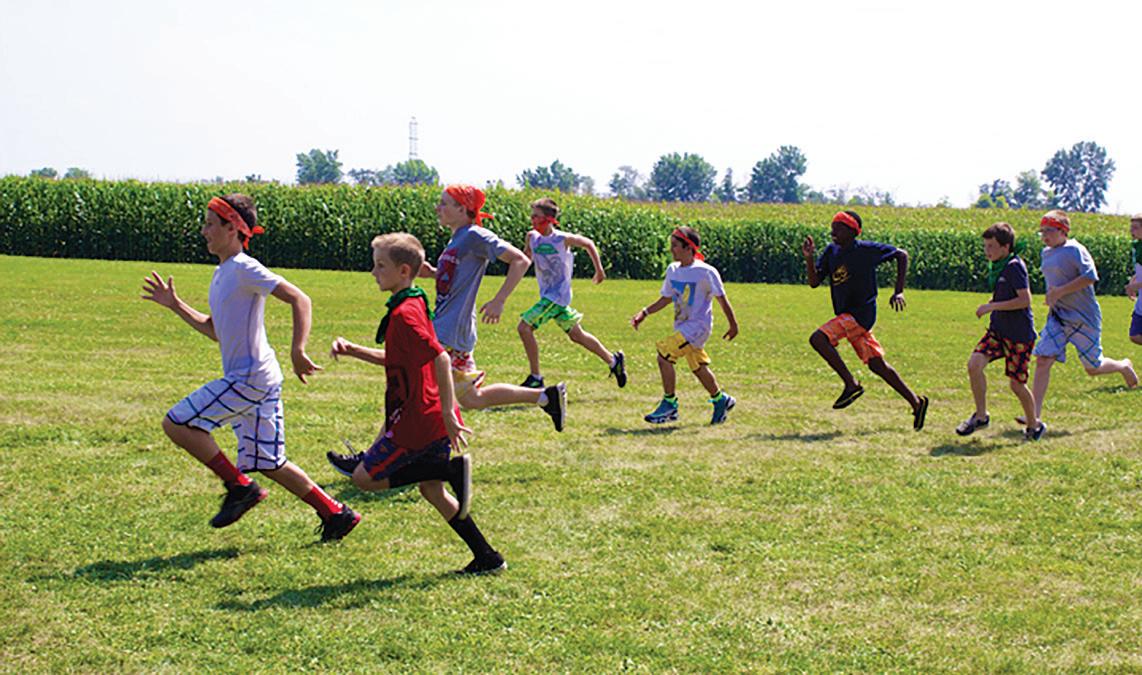
Register now at IBSA.org/2022Camps
INSIDE
ILLINOIS BAPTIST STATE ASSOCIATION

EDITOR
Eric Reed
DESIGNER
Kris Kell
SOCIAL MEDIA MANAGER
Lisa Misner
COPY EDITOR
Leah Honnen
COMMUNICATIONS TEAM LEADER

Ben Jones
Published three times each year, Resource provides new information about IBSA ministries, equipping opportunities, and services. This periodical is sent free of charge to church leaders. To request more copies for your leaders, contact Communications@IBSA.org. Resource is also available online at http://resource. IBSA.org.
For questions about subscriptions, articles, or events, contact the IBSA Communications Team at (217) 391-3119 or e-mail Communications@IBSA.org.
POSTMASTER: Resource is owned and published 3 times each year (Jan., May, and Sept.) by the Illinois Baptist State Association, 3085 Stevenson Drive, Springfield, Illinois 62703-4440.
IBSA.org 01 INSIGHT 2 Editor’s note Who’s really on first? 6 Lisa Misner The church that cares about our culture 7 Scott Foshie Create a congregation that invites people 8 Jack Lucas Ideas for a richer learning experience 9 Carmen Halsey Guiding questions for women’s ministry 32 Meredith Flynn Your team’s most important player DIRECTORY 3 IBSA missionaries and staff 5 Zones, zone consultants, and associations PLANNER 19 Calendar pages May – August PLUS: 20 Great Weekends! 6 pages of summertime ministry ideas EQUIPPING 25 SBC Annual Meeting 26 Leadership & Missions 28 Kids & Camps 29 Partners & Services 30 Special Report Mourning becomes electric: How “GriefShare” draws hurting people
leaders see from up top SUMMER 2022 10 ‘FOURTEENERS’ Some lessons from the highest peaks Nate Adams 14 LEADERS ON LEADING From the Midwest Leadership Summit Clint Calvert, Mark Clifton, Kathy Litton, Ben Mandrell, Willie McLaurin 17 STOP MEETING Here’s a better way to get things done Heath Tibbetts
The View What
Who may ascend the mountain of the Lord?
Who may stand in his holy place?
The one who has clean hands and a pure heart...
– Psalm 24:3-4a
To the top E
dmund Hillary is often credited as the first man to have reached the summit of Mt. Everest. It happened on May 29, 1953.
Hillary had been part of an earlier British expedition in 1951 seeking to be the first to plant their flag at the peak, 29,029 feet. As the first person to reach both poles and to scale the world’s highest mountain, Hillary captured the world’s attention and admiration. He was knighted for his amazing achievements. News of topping Everest reached the U.K. on the day of Queen Elizabeth’s coronation. And Time magazine named Hillary one of the 100 most influential people of the century.
Hillary’s accomplishments are not to be diminished by this simple fact: he didn’t do it alone.
There were more than 400 people in the climbing party, including 362 porters carrying 10,000 pounds of equipment and supplies. And 20 Sherpas.
Hillary was first to put his footprint on the peak, and Tenzing Norgay was second. Norgay was the Nepalese Sherpa who accompanied Hillary to the top. Norgay had participated in various expeditions, including Everest, since 1935. And in 1952, he accompanied Swiss climbers in their effort to make the summit. Hillary wrote of Norgay, “He was incredibly patient with all our questions and requests. His success in the past had given him great physical confidence…. Tenzing had substantially greater personal ambition than any Sherpa I had met.”
More than 6,000 people have climbed to the top of Mt. Everest since 1953. And 300 have died in the attempt. The greatest success is not credited to the explorers, but to the men who guided them. One Sherpa,
Nepalese Sherpa Kami Rita has reached the summit of Mt. Everest 24 times.
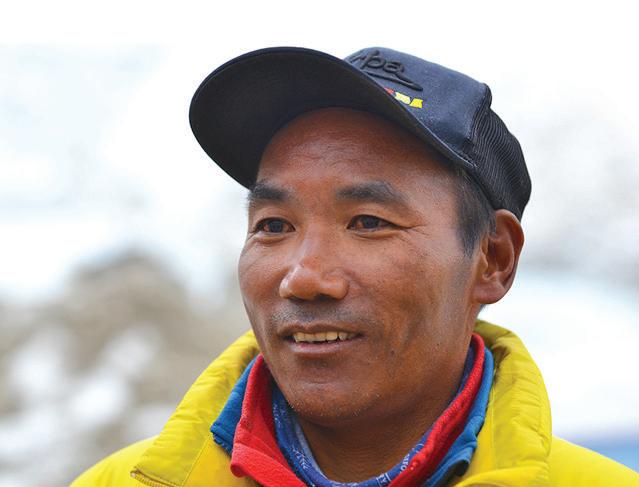
Kami Rita, holds the record of reaching the summit 24 times.
As we consider once more the subject of leadership, we draw on the expertise of those who have gone before us. Some are well known, such as the plenary speakers at the Midwest Leadership Summit who are featured in this issue. But for many of us, whatever success we may attain can be credited to people who are largely uncelebrated in the ministry world, pastors and teachers and deacons who served quietly and humbly, becoming our standard for measurement and little knowing the impact they had as we followed in their footsteps. To them we are especially grateful.
Last trip: This is the final issue of Resource magazine. Over the past ten years it has been our pleasure to provide you with this leadership development publication. With rising printing costs and increased online availability of resources, we are redirecting the funding and efforts to other products to meet current needs. We are grateful to all the Illinois pastors, IBSA team members, and writers who made this publication unique among Baptist state conventions. And thanks to our art director, Kris Kell, for engaging design even on short schedules. I hope Resource has been helpful to you and your ministry. Thanks for reading.

02 RESOURCE SUMMER 2022
Eric Reed is editor of IBSA media.
R

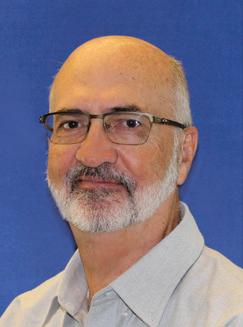

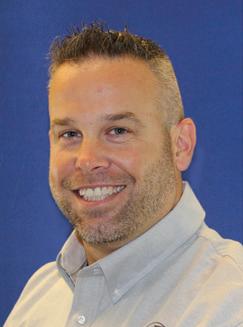


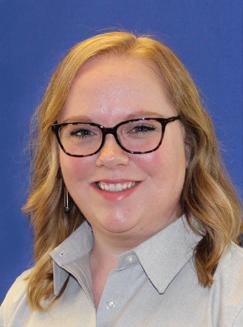
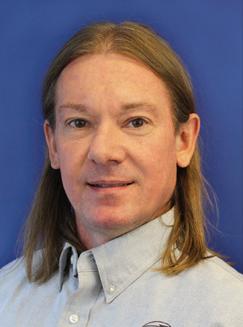
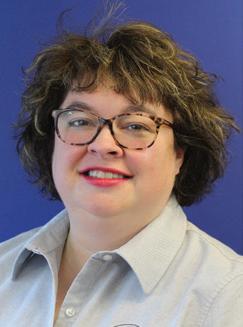
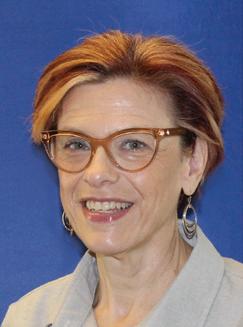
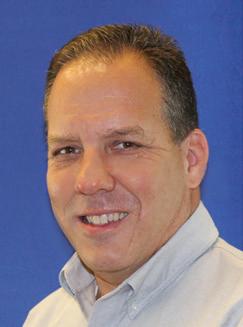

DIRECTORY IBSA IBSA.org 03 Executive Team Nate Adams Executive Director (217) 391-3108 Operations Team Jeff Deasy Operations Team Leader (217) 391-3104 Carole Doom Administrative Coordinator (217) 391-3113 Drew Heironimus Information & Technology Services Director (217) 391-3112 Kendra Jackson Bookkeeper (217) 391-3111 Ashley Parsons Accountant (217) 391-3106 Communications Team Leah Honnen Administrative Assistant (217) 391-3127 Kris Kell Production Manager (217) 391-3115 Lisa Misner Social Media & Public Policy Manager (217) 391-3119 Barb Troeger Executive Assistant (217) 391-3107 Mark Emerson Associate Executive Director (217) 391-3136 Ben Jones Communications Team Leader (217) 391-3140
Health Team
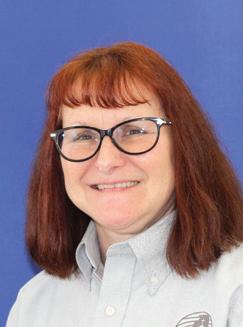
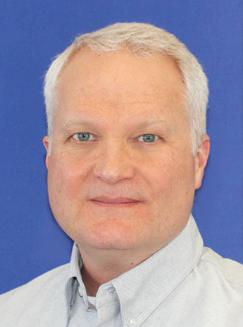
Growth Team
(217) 391-3122
391-3128
391-3142
Mission Team
(217) 391-3139
(217) 391-3131
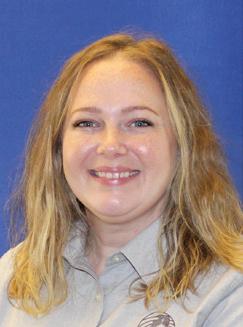


391-3137
391-3143
391-3123
697-1036
608-0349


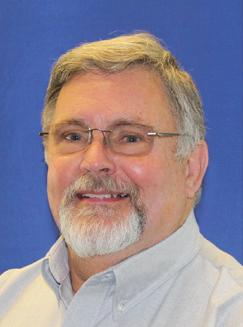
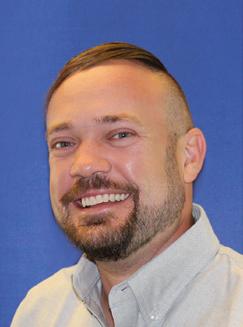

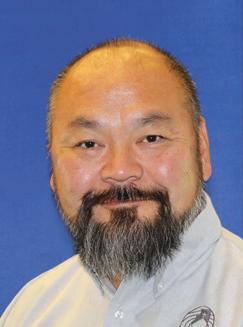


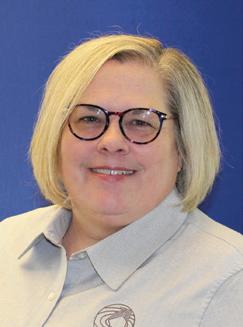
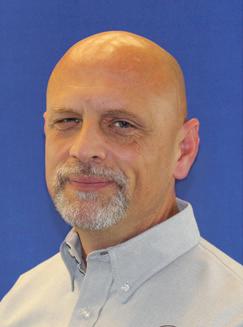
391-3126
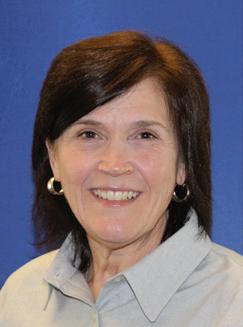
04 RESOURCE SUMMER 2022
DIRECTORY
Carmen Halsey Leadership Development Director (217)
Jack Lucas Leadership Development Director (217) 391-3135
Tammy Butler Ministry Assistant (217) 391-3124
Tammy Ratsch Ministry Assistant (217)
Jorge Melendez CP – Catalyst (630) 710-3106
Ken Wilson CP – Catalyst Central, Southern Regions (618)
John Yi CP – Catalyst Northeast Region (312)
Scott Foshie Health Team Leader
Linda Darden Ministry Assistant (217)
Kevin Jones Church Planting Director (217)
Butch Porter Disaster Relief (618) 499-2215
Aubrey Krol Ministry Assistant (217) 391-3138
Fran Trascritti Growth Team Leader (217)
Scott Harris Mission Team Leader
Shannon Ford Missions Director
Lisa Harbaugh Ministry Assistant (217)
Zone Consultants
Zone 1
(630) 908-0853
(847) 804-1058
(217) 254-0647
IBSA Zones 1-10
Chris
Zone 4
(779) 772-6161
Joe Gardner Zone 5 (309) 369-1403
Cliff Woodman Zone 6
(618) 946-5720
For Zones not pictured here, contact Growth Team Leader Fran Trascritti. (217) 391-3142 • FranTrascritti@IBSA.org
Roger Marshall Zone 7 (217) 259-9665
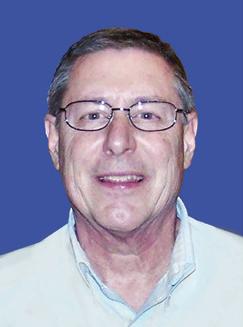
IBSA Camps
Jacob Kimbrough Manager



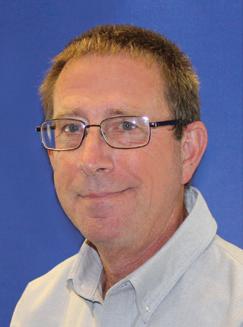
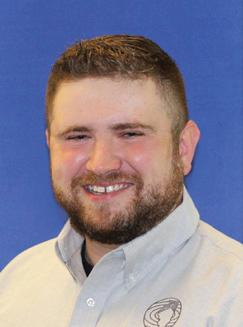
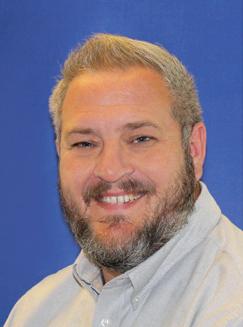
Streator Baptist Camp (815) 992-5947
Ashby Tillery Zone 10 (618) 571-0776
Local Associations
ANTIOCH (618) 695-2762
BAY CREEK (217) 222-8867
BIG SALINE (618) 841-9064
CENTRAL (217) 330-7593
CHICAGO METRO (773) 278-4400
CLEAR CREEK (618) 833-4481
EAST CENTRAL (217) 586-5599
FOX VALLEY (573) 579-8143
FRANKLIN (618) 439-3742
GATEWAY (618) 254-3953
GOSHEN TRAIL (618) 839-2981
GREATER WABASH (618) 847-3041
HEARTLAND NETWORK (217) 529-3429
Brock Vandever Manager

Lake Sallateeska Baptist Camp (618) 318-9424
KASKASKIA (618) 227-0001
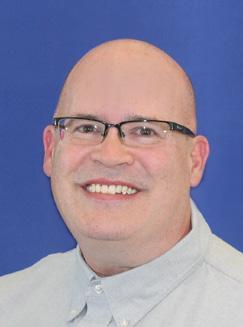

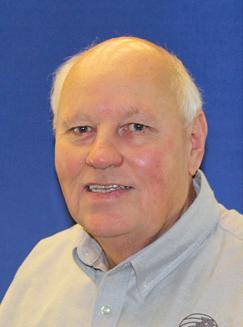
LAKE COUNTY (847) 336-3960
LOUISVILLE (618) 283-0842
MACOUPIN (217) 854-8279
METRO EAST (618) 624-4444
METRO PEORIA (309) 369-1403
NINE MILE (618) 615-9095
NORTH CENTRAL (773) 354-4754
OLNEY (618) 392-7001
PALESTINE (618) 569-3189
QUAD CITIES (309) 221-4143
REHOBOTH (618) 283-0842
SALEM SOUTH (618) 242-7862
SALINE (618) 252-1440
SANDY CREEK (217) 882-2231
SINNISSIPPI (815) 631-4182
THREE RIVERS (815) 725-7361
UNION (618) 524-9738
WEST CENTRAL (309) 351-5499
WESTFIELD (217) 549-8690
WILLIAMSON (618) 993-6069
IBSA.org 05 DIRECTORY
Bryan Price
Nolin
John Calio Zone 3
Jay Simala Zone 2
Active in the culture
Summer is an opportunity to host Vacation Bible School, send students to summer camp, and participate in other bright and happy evangelistic events. But this summer there is an issue which stirs conflicting emotions. The U.S. Supreme Court is expected to make a landmark decision in a Mississippi case that could weaken, overturn, or even more strictly enforce Roe v. Wade, the 1973 ruling that made abortion legal in the United States.
Whatever the Court decides, the State of Illinois has codified abortion into law. This means, the state legislature has gone beyond the actions of the high court and written legal abortion into law in the Reproductive Health Act passed in 2019. So, nothing the Court decides when it rules on Mississippi’s Dobbs v. Jackson changes the legality of abortion Illinois.
What can churches do? In 2020, state health statistics showed 9,686 women from out of state traveled to Illinois to have an abortion, up nearly 29% from the previous year. Clinics near the Illinois state lines have put up welcome signs directing women to their doors. If Roe is weakened or overturned, more women will come to Illinois to terminate their pregnancies. Churches can help women with their critical life choices. Members can wait with signs outside abortion clinics, offering free water and compassion.
Volunteer or give to a pro-life crisis pregnancy center. A new study published by the Public Library of Science found nearly half of women who consider having an abortion do so within four weeks of learning they’re pregnant. However, of those women who were exposed to a pro-life crisis pregnancy center, only about 30% had an abortion. For areas without a pro-life pregnancy center, there’s the Baptist Children’s Home and Family Services’
(BCHFS) new clinic, GraceHaven, opened in Mt. Vernon in 2021. BCHFS also operates Angel’s Cove Maternity Center for pregnant women and their children. Learn more about both services through BCHFS.com.

Start an outreach to hurting women—and men. A recent Lifeway survey found 4-in-10 women who had an abortion were churchgoers when they had the procedure. Among them 38% said the father of the baby was influential in their decision. Today, many of those women and men who’ve come to regret the decision they made are still sitting in our pews. Project Rachel takes its name from Jeremiah 31:15-17, “Rachel mourns for her children...” Founded as a Catholic ministry, it now has non-denominational groups. Learn more at hopeafterabortion.com.
Really think through what being pro-life means. Being pro-life doesn’t just mean being anti-something. Being pro-life means being pro-adoption, pro-foster care, pro-hunger ministry, pro-eldercare, pro-much more than we thought. When we think it through, pro-life means every stage of life.
The person who can’t adopt or foster a child can help support people who do. Everyone who donates to a church’s adoption fund can make a difference. Other pro-life actions include donations to a local food ministry, or starting an eldercare home outreach through the local church.
Once we start brainstorming about the meaning of pro-life, the ideas keep coming. Now is the time.
LISA MISNER
social media & public policy manager. LisaMisner@IBSA.org

06 RESOURCE SUMMER 2022
INSIGHT
is IBSA’s
Why pro-life action is needed now
Healthy church essentials
An invitational culture flows from the heart
Despite an abundance of evangelism training and gospel-sharing strategies, professions of faith and baptisms continue their decline in Illinois Baptist life. Could it be that our evangelism crisis is a symptom of a heart change needed to impact the culture of our churches?
Throughout Scripture, we see God’s model for thriving churches. While Jesus gave us the Great Commission in Matthew 28:18-20 and our command to be his witnesses in Acts 1:8, he also reminded us in Matthew 22:37 that our witness must well out of our love relationship with him.
The thriving early church Luke wrote about in Acts 2 was simply living out the abiding relationship with God that Jesus pictures in John 15:5. How can we return to an Acts 2 culture in our churches?
Gospel up front
Throughout the New Testament, we see clear, faithful presentation of the gospel and the invitation to receive Christ modeled by church and network leaders. Peter, filled with the Holy Spirit, communicated in a way that caused those listening to be “pierced to the heart” (Acts 2:37).
We can shift the culture in our churches by keeping the gospel in front of our people. In every sermon, a clear, concise gospel message should be provided. Consider keeping the gospel prominently displayed in your church’s print and digital media week after week. When Christians hear the gospel constantly and have easy access to it from their pastor and church, they are more likely to share their faith when God brings opportunities.
This type of gospel-saturated culture mirrors Luke’s early church picture of Christians seeing the Lord “adding to their number day by day those who are being saved” (Acts 2:47b). All of this must emanate from a
heart that loves Jesus so much that gospel invitation flows out, impacting the lives of others.
Frequent opportunities
Satan is constantly waging a war to keep us from overcoming our fear, doubt, and distraction to share our faith. Church leaders can overcome this by modeling how to share the gospel and to invite people to Christ.
Ensure that the gospel is presented with clarity and passion in every worship service, small group gathering, and ministry opportunity involving any age. These abundant opportunities are much more than gospel opportunities for those in attendance. Through steadfast modeling, we build people’s skill and confidence in loving others and sharing Christ.
Stick to it
Church cultures don’t change overnight. It takes three years to shift church culture through transformative leadership, experts say. This kind of culture shift can lead to generational impact. That’s three years of saturating a church with love, prayer, encouragement, gospel intentionality, hospitality, discipleship, and celebration before the culture shifts in a lasting way.
Three years may seem like a long time, but it’s no coincidence that Jesus spent three years living a culture of invitation with his disciples before he released them into ministry.
God has opened a door of opportunity for each of us to have a fresh start. Why not answer his call to make the next three years a time of culture-shift toward inviting people to follow Jesus?
ScottFoshie@IBSA.org

IBSA.org 07
INSIGHT
SCOTT FOSHIE is IBSA’s Church Health Team Leader. He coaches churches and associations in the revitalization process.
What do learners need?
ack, I want to do something else,” a new kindergarten teacher told me. “I’m ready to quit.”
“But you’ve only been teaching three weeks,” I replied, “and you were so gung-ho. What happened?”
“I don’t know, but the kids are off doing their own thing most of the time,” she said. “It’s just not working.”
I couldn’t afford to lose a teacher, especially one who was so enthusiastic just a few weeks earlier. “Let me sit in on your class this Sunday,” I said, “and maybe we can figure it out.”
Just a few minutes into the Sunday school time, the problem was obvious. She was teaching kindergarteners on a third-grade level. This fresh, sweet, but inexperienced teacher was reading the lesson with the children, and most of them couldn’t read. As a young public school teacher myself, I recognized the issue, and I told her.
“You have to teach on their level, whatever it is.” We worked on her methods, planned activities to keep young children engaged, and in just a couple of weeks, the class was enjoying their new teacher. And she was gung-ho again.
I have remembered that particular disconnect between teacher and students because I’ve seen it repeated many times. Good, well-intentioned teachers don’t recognize the learning level or styles of their students, whether they are children, youth, or adults.
It’s critically important at any age level to understand what the student is capable of doing cognitively. For example, if a child is still in a concrete thinking stage and not thinking at an abstract level, he’s going to have a hard time learning about the Trinity. Children who think concretely struggle with concepts that you cannot touch and see.
There is a point in their development when they truly understand more abstract concepts such as sin and
forgiveness and what Jesus did on the cross. Reaching that point is different for every student, even adults. We can’t draw a line and say where they must be in their development. But we must understand the appropriate ages and stages in order to teach effectively.
Even for longtime teachers, it’s good to assess the learning level and learning styles of the students. Thinking “my class isn’t getting this” may be an indication that either the material is above their learning level, even if it’s the right grade level. Or, it may mean the class needs different teaching methods, such as learning stations and activities.
I have found that some teachers stick to the teaching styles they like, rather than asking what the students need. Are they visual learners or auditory learners? Do they prefer quiet play or vigorous activity?

Too often, Sunday school looks like school, when it should look more like VBS. The variety of teaching styles and activities employed in VBS are easily translated to Sundays, so that the most exciting (and effective) week of the year is repeated every week all year.
Effective teaching begins with assessing the needs of the learners.
JACK LUCAS is IBSA’s leadership development director. JackLucas@IBSA.org

08 RESOURCE SUMMER 2022
INSIGHT
“J Effective teachers ask this question
May I recommend ... Ages & Stages: Levels of Biblical Learning Lifeway.com/lobl
Starting line
Define discipleship to spark ministry to women
We want to see churches across Illinois engaged in discipling women and developing women leaders. With those goals in mind, when I sit down with leaders who want to build specific ministries to reach women, I start with one big question:
“How is your church currently discipling women?”
When I ask that, I mean all women in the church—all ages and affinity groups included, plus women who are currently serving in the church. This key question will help us identify what a team is already doing in terms of women’s discipleship, and lean into the gaps that are actually opportunities to reach more women. We want to help leaders develop multiple “on-ramps” for discipleship.

In this assessment process, I also use a series of more specific questions we learned from Ashley Allen, a women’s ministry leader in North Carolina:
• How many women have come to Christ in the past year through your current women’s ministry?
• How many small group Bible studies do you offer for women?
• Are your women currently praying for lost women by name?
• Are you praying God would raise up and send out missionaries from your church?
These questions are designed to help leaders assess strengths and areas of improvement and support those big goals of discipleship and leadership development. They’re not meant to put leaders on the defensive. By peeling back the layers, we can define what exactly we mean when we ask that first important question.
We also assess how ready a leadership team is to point women inside and outside the church to specific resources that address their specific needs, and to Bible study groups they can jump into at any point.
The goal is to move women into a discipleship pipeline, but we know that’s going to look different for every person. There can’t be just one point of entry. That’s
why we encourage having multiple on-ramps.
As churches leverage existing groups and affinities, they can draw more women into the pipeline. When they find gaps, there is probably need for a new group to reach the missing demographic.
Leaders are disciples too
After we’ve assessed a church’s current women’s discipleship strategy, we move backwards to another starting line: the leader’s personal discipleship journey.
We know there is a direct connection between our own walk with God and how well we’re able to lead others in theirs. So, we ask another set of evaluative questions about how the leader herself is being a disciple, and how she’s drawing others into the process:
How are you abiding in the Lord? We ask leaders what their time in prayer and in God’s word looks like right now. We want to know if they have a set reading time, or if they are part of a small group.
How has God designed you to serve? Leaders should always be developing the skills and talents God has given them. If they are not actively learning and gaining new competencies, I point to leadership cohorts that IBSA facilitates.
Who are you developing as a leader? Passing the leadership baton is vital. Replication is an act of obedience.
It’s not our desire not to develop people as a means to an end, but to help them move to the next step in their personal discipleship process. As they learn to lead themselves effectively, they’re better equipped to lead others.
IBSA.org 09
CARMEN HALSEY is IBSA’s leadership development director. CarmenHalsey@IBSA.org
INSIGHT
LESSONS FROM THE SUMMIT
by Nate Adams
For several years now, my oldest son Caleb has been on a quest to climb the 58 tallest mountains in Colorado. They are known as “fourteeners,” because the summit of each one is at least 14,000 feet in elevation. I told him I would join him in this quest whenever I could, as long as my middleaged legs and lungs hold out. So far, we have scaled 35 of these amazing peaks.

Many summers, I have returned to Illinois to share my discoveries with the IBSA staff. Here are a few lessons from my adventures.
Lesson 1: Climb that mountain again
One summer, though I made it up and down six fourteeners in about a week, only two of them were new conquests. Believe it or not, I chose to climb four of the mountains I had already climbed.
Why on earth climb the same mountains twice? This
time we wanted to take some new climbers with us. Caleb’s wife, Laura, and my wife, Beth, joined us. Neither had climbed a fourteener before.
So we chose mountains that were familiar, and that we believed our understudies could climb too. On the hike itself, we went slower than we normally would, and we stopped to rest more often. Of course, it took longer. Yet there was a new kind of joy in the climb, and a new kind of satisfaction at the summit, even though we had been there before.
During that same week, I was finalizing IBSA’s proposed goals for the next year, goals that were to be approved by the IBSA board at their September meeting. As I worked on those goals, I reflected on our experiences climbing mountains.
Many times before, Caleb and I had returned from a hike and described to others its unique challenges and what was required to make it to the top and back. We had
10 RESOURCE SUMMER 2022
THE VIEW
What I learned climbing the ‘Fourteeners’
often urged others to come with us to those new heights, of course explaining what they would need to endure to get there. But none of that talk “about” hiking could compare with the experience of actually walking together, in relationship, up a mountain some of us had already climbed.
So one evening with tired legs at the bottom of a mountain, I drafted a new set of goals for IBSA. They addressed some of the same issues we had focused on for many years, including leadership development, evangelism, missions, and student ministry. But the climb up the mountain would be different this time. The circumstances were different, and we were climbing with different companions. As on a Colorado mountaintop, our success would not be measured only by individual achievement, but by the accomplishment of the whole team, including our first timers.
There are many pastors and leaders who have climbed
their own mountains in ministry, and who can help other pastors and leaders up those mountains. Helping someone else up a mountain you’ve already climbed can be even more satisfying than simply climbing it yourself.

Lesson 2: It’s true, we’re stronger together
Over the years, I’ve grown to love Aspen trees. They’re not that common in Illinois, growing in only about a third of the state’s counties, mostly in the north. But in cooler or higher altitude climates such as central Colorado they grow abundantly, often covering the mountains like wildflowers.
It was while vacationing there with my family one summer that I started asking myself why I find Aspen trees so beautiful and interesting. Is it the quaking leaves, which so freely alternate their green and silver sides in the breeze, and then turn bright yellow in the fall? Or is it that those leaves are mounted on a beautiful white tree
IBSA.org 11
trunk, crisscrossed with black bands, that grow up to a hundred feet tall?
Perhaps it’s that these striking trees always appear so plentifully. Aspens grow in clusters or “stands,” and multiply rapidly. Individual trees are actually part of a larger, singular organism that spreads rapidly in the form of new trees from a common root system.
As a result, one Aspen stand in Utah is considered by many to be the world’s oldest living organism. It’s more ancient than the massive Sequoias of the west, or even the famous Bristlecone Pines, some of which are said to be 5,000 years old. It appears that individual trees like those are not quite as enduring as the spreading organism of Aspens, which presents itself as many trees, yet underneath shares a unified root system that results in each unique tree being a genetic replicate of the others.
I find in these beautiful Aspen trees an encouraging metaphor for the equally creative work I believe God desires to do among Baptist churches here in Illinois. Like the diversely colored leaves that quake at the slightest breeze, our lives, stirred and filled by the Holy Spirit, should attract the attention of those we meet and invite them to know Jesus as Savior.
The bright white-and-black banded trunk that holds us together is the local church, that beautifully reflects the light of Christ and his word, not just one at a time, but in diverse sizes and shapes. Yet our churches should be united by a common root system of both doctrine and cooperation, one that makes us resilient and also allows us to multiply rapidly and spread throughout our region and the world.
Aspens grow all the time, even in winter. But many feel they are most brilliant and beautiful in the fall, when their golden leaves paint the
mountainside with the glory of God. As we take our “stand” together, I believe we have an opportunity to do the same.
Lesson 3: There are many types of summits

In the early 1970s, Baptist leaders from seven North Central states, along with leaders from the national SBC, were engaging in serious missiological discussions about advancing the gospel and doubling the number of Baptist churches in the upper Midwest.
It was a vast undertaking for these relatively small networks of churches. Yet they embraced their Great Commission responsibility for the 25% of U.S. population that lived in their states, knowing that most did not yet know Jesus personally.
Out of those discussions grew the North Central Mission Thrust of 1977-1990, a coordinated domestic missions effort that resulted in the planting of 564 churches over 14 years, increasing the number of SBC churches in the region by 24%. Many of us worship today in churches that were planted during that period.
The North Central Mission Thrust continued for ten years beyond its planned conclusion and established a lasting fellowship among Baptist leaders in the region. Today an expanded group of leaders from nine state conventions representing twelve Midwest states gather regularly to discuss strategy and best practices, and to plan a biannual leadership event now known as the Midwest Leadership Summit.
In preparing for the 2022 conference of 1,000 church leaders meeting in Springfield, I discovered a 28-page report summarizing the “before and after” history of the North Central Mission Thrust, including its leaders, its missional goals, its key strategy decisions, and its results.
I marveled at the level of inten-
12 RESOURCE SUMMER 2022
tional, missional strategy and cooperation that took place between autonomous Baptist entities and leaders, many of whose names I recognized from my father’s generation. I fear that in these current days of cultural acrimony, denominational controversy, and heightened autonomy we have lost too much of that spirit of selfless, missional cooperation.
I was surprised at how much gospel and church planting advance was made during that intentional 24-year period, and how relatively little has been made in the 21 years since then. Our trip to the Summit this year makes me wonder how we could do more together than just plan a good event every two years.

Lesson 4: It’s not over, even when it’s over
One of the more important things I’ve learned during years of mountain climbing is that even when you’ve reached the summit, the hike is not over. What goes up truly must come down. And though the ascent can be tough, the second half of a hike is often challenging in its own ways.
For example, my son Caleb and I undertook a long hike up a particularly difficult mountain in Colorado named Ellingwood Point. The ascent to 14,042 feet was especially demanding due to one stretch where the only way up was through a long slide of loose rock with extremely difficult footing. Scrambling up that 800 feet of altitude gain required almost two hours, and postponed our arrival at the summit.
Climbers at that altitude are always advised to be well on their way back down into the tree line by noon, to avoid exposure to afternoon storms and especially lightning. So we took little time to rest at the top. Perhaps that’s why, just a few hundred feet into our descent, one of my legs stopped working.
For a scary few minutes, I sat immobilized on a steep slope of loose rocks, vigorously massaging my cramped leg. Caleb and I began discussing our options, if my leg’s strength didn’t return. No other climbers were around, and there was no cell phone reception. We even found ourselves discussing the somber reality that there was no reasonable place for a rescue helicopter to land. Our only choice, really, was to rest, recover, reflect, and plan.
Eventually the paralyzing cramp passed and surprising strength returned to my leg. Praising God, we slowly finished the rest of our hike. But for the first time, it took us just as long to climb down a mountain as it had to climb up.
Fast forward now to the flatlands of Illinois, and the unexpected, pandemic plagued years we and our churches have all endured. The price has been dear in many ways, and the pace exhausting. But the disease and the restrictions are starting to pass, and the hardest part of the climb may be over.
But the second half of a hike is often challenging in its own ways. It places demands on different muscles, requires different pathfinding, and calls for endurance at a higher level of fatigue. In fact, falling during a descent is often more dangerous than on the way up.
The question this mountain of a pandemic raised in our minds as we climbed it may well have been, “How will we now survive?” But the question that challenges us for the rest of the hike out of the pandemic should be “How will we now thrive?”
You and your church have climbed quite a mountain over the past year or so. By God’s grace, you have survived. Now as you continue your journey, take some time to imagine what “thriving” means for your church, and in your setting.
IBSA.org 13 R
NATE ADAMS is executive director of the Illinois Baptist State Association. Respond at IllinoisBaptist@IBSA.org.
Nate is pictured above with his son (and climbing partner) Caleb.
LEADERS ON LEADING
Fresh insight from speakers at the Midwest Leadership Summit
Ben Mandrell: Preaching to skeptics
“Of all the things about being a pastor that I found most difficult, keeping a burning heart for the lost was the highest challenge.”
Illinois native Ben Mandrell began his session on preaching to skeptics with a prayer of self-confession. Drawing on his experience as a pastor in Colorado, the President and CEO of Lifeway Christian Resources then shared five practices to help pastors reach the irreligious in their communities.
1. Be very gentle in your apologetics.
To reach the skeptics, preachers need to be intentional about lifting up the glory of Christianity without bashing the other religions in their community.
“The beauty of the gospel, the beauty of Christianity is a defense in and of itself,” Mandrell said. “So if you want to win people to your church from non-religious circles, you have to create a culture where you speak kindly about those who are not in the room.”
Preaching with the skeptic in mind necessitates an understanding that church members will bring their non-Christian friends and neighbors to church. Doing this consistently will create a culture of trust where people feel comfortable bringing unchurched friends.
2. Tell stories every Sunday about someone you engaged with that’s a non-religious person.
Telling little snippets of interactions the pastor has with non-religious people in his everyday life encourages church members to have similar interactions.
Mandrell challenged listeners to be intentional about scheduling these opportunities on their calendar each week. “There should be a lunch or a coffee with somebody who has no immediate interest in coming to your church. You’re just building relationships,” he said.
3. Preach the Bible. People really are interested in it.
Attracting unchurched people doesn’t require abandoning the Bible. But don’t assume that unchurched people
know anything about the Bible or how to apply it to their lives.
Mandrell said that he still faithfully focused on the biblical text for the majority of the message when preaching to his post-Christian culture in Denver, but he began adding three application questions at the end each week.

“I’m going to answer one question from the seasoned Christian; one question from a good-hearted skeptic in the room; and one question from a student in our student ministry.” These hypothetical questions helped each person in the church that day know how they might apply something from the sermon.
“If you’re not ending your sermon with some really clear takeaways,” Mandrell stated, “people are walking away from your message saying, ‘You’re a really great speaker, but I have no idea what you just said.’”
4. Put yourself in the center of kids ministry.
“The best way to reach non-religious people in your community by far is by loving their kids,” Mandrell said as he urged pastors to be personally involved and active in kids camps, VBS, and children’s ministry.
“A lot of pastors are making big mistakes here. We think that the main event on Sunday morning is the big room. But over 90% of people make decisions for Christ before
14 RESOURCE SUMMER 2022
they are 14 years old. The main event is outside the big room. The main room is what’s happening in the side rooms where the kids are.”
5. Elevate baptism. Baptism is a powerful thing.
The story of a life changed by Jesus Christ shown vividly in front of the church through baptism, combined with some video clips or testimony of a person’s story, can speak powerfully to the skeptic.
“The real-life story of how someone in your church reached a non-religious person—and they’re being baptized today—is the biggest pep rally that can happen at your church. It’s better than any sermon you will ever preach,” Mandrell said.
For Southern Baptists living outside of the South, understanding how to reach the skeptic is essential. Putting these five steps into practice can change the culture of the church, from one where only the most evangelistic in the church are sharing the gospel, into one where the whole church seeks to reach the skeptic.
Kathy Litton: The emotionally healthy leader
Spiritual leaders’ emotional health will be on public display, and we won’t even know it. “It is our spiritual maturity that grows our emotional security,”
Kathy Litton said at a packed session for ministry wives.

Litton is the wife of SBC President Ed Litton and Director of Planter Spouse Development for the North American Mission Board.
“When pastors and their spouses work on their own emotional health, it’s a real gift to the church,” she told the women, quoting author Michael Hyatt. “We should lead our heart, not follow it. The heart can lead to a downward spiral (to) depression.
“We can lead the heart to trust God.”
Mark Clifton: Revitalization and the multi-generational church

“When a church closes it’s doors, it says something about the power and glory of God that we don’t want to say.”
Mark Clifton, Senior Director of Church Replanting and Rural Strategy at NAMB, said that when a church closes its doors, it undermines the message of the power of God in the community. “They hear you preaching that God is the answer to your problems, but he can’t keep this church open.”
Pastors need to be equipped to revitalize churches because it magnifies the true glory of God. One of the essential qualities needed by pastors in church revitalization, Clifton said, is an affinity for multi-generations. A pastor must possess a love for both younger and older adults, as well as understand how to lead them together.
Practically, he advises two starting points for pastors seeking to become multi-generational in a church revitalization: First, focus on reaching and discipling one young man. Second, love older people for who they are.
When trying to reach young men, “don’t try to dress like them,” Clifton urged, instead “listen to them.” Young men want to be discipled by older men and they want the opportunity to lead.
An affinity for multi-generations recognizes that for a church to become vibrant for the next generation somebody must let go, and somebody must grab on. But if the older generation does not let go of leadership, he cautioned, the younger generation cannot grab on.
Only valuing young people will not create a multi-generational church. Change is often difficult for an older generation, where their church seems like the only thing in their world that hasn’t changed. Clifton said pastors need to recognize how difficult change is for older members. But instead of avoiding change, he said, “an older generation needs to be loved into change.” The older generation will find joy in the multi-generational church that will never exist if changes aren’t made.
An effective revitalization pastor will lovingly help older members make changes because it is what is best for them, not bad for them.
IBSA.org 15
Clint Calvert: Coaching for solutions
“People have very low ownership of ideas they didn’t come up with themselves,” said Clint Calvert, Church Leadership Catalyst with the Minnesota-Wisconsin Baptist Convention. A mentor or counselor may be needed during a crisis, but a coach can be the most effective role a leader can play.

Associational leaders and pastors often find themselves in relationships where help is needed by a peer, church member, or friend. When it is not a situation in need of clear-cut biblical or moral answers, a coach is the best answer for success.
Using the acronym, COACH, Calvert promoted a four-step strategy to simplify the coaching process and get the best results.

Conversation. Chat with the person. Write down a few details that are going on in the person’s life. Ask follow-up questions about these during the next coaching session. Conversation helps the coach get a feel for what the person is going through and really cares about.
Outcome. The person being coached must set the agenda. It won’t be an effective coaching session if they don’t identify what they want to accomplish during the session.
Awareness. The coach needs to ask questions that create awareness of progress and results. Calvert gives examples such as “What are you learning about yourself as we talk?” and “Are we moving toward the results you are looking for?”
Course. The person being coached must be led to determine what they will do to move the plan forward. The coach should ask clarifying questions that help put a clear course of action on paper.
Highlight. The coach should ask for a review of what went best and was most helpful from the session. “The (tactic) you believe in is the one you can make work,” Calvert said. When done well, coaching guides a person to discover his own ideas and clearly see his own solutions. A motivated person will put those solutions into action to make success happen.
Willie McLaurin:
Kingdom diversity
“(Our denomination) was born out of slavery. And so here’s the deal: we all have a history. Here’s the good news: there is nothing that you can do about your past, but there’s a whole lot that you can do about the future,” said Willie McLaurin, Interim President and CEO of the SBC Executive Committee. McLaurin sees the battle for racial reconciliation as hard work to be done in the cul-de-sac of the local leader and the community of the local church.
McLaurin urged those who don’t know what to say about the issues to start with prayer about the issues. Prayer places a person in a posture to have their heart softened by God as they listen to the experiences of others and see the challenges. He called all leaders to capture the vision of Revelation 7:9 and to work toward seeing as much of that come to pass in their day as possible. That requires a movement, McLaurin said, not a moment. “A moment doesn’t cost you anything, but a movement causes you to sacrifice. So, the question for us is what are we willing to sacrifice?”
Begin with lament. “My plea is that we, as a people, we get our tears back.” People in the church need to be broken over every life that has been captured by sin, whether drug addiction or the hard-heartedness of racism.
Corporately, McLaurin advocated gathering churches for a solemn assembly “simply to pray and the seek the face of God, repent of their sins, and invite the glory and the power and the presence of God to saturate the people of God.”
A unified prayer should lead to a unified voice, he said. If Christians of different ethnicities speak together, whether for sanctity of life in the womb or the importance of justice, then “there is a much greater chance of moving toward some sense of racial reconciliation.”
16 RESOURCE SUMMER 2022
R
STOP MEETING
by Heath Tibbetts
People hate meetings. A recent workplace study by Fischtank PR found 90% of Americans consider meetings a waste of time and productivity. And Forbes reported 58% of workers would rather go to the doctor than another work meeting.

Church meetings are no better. They’re often overscheduled, poorly run, and struggle for quorum and impact. If we know our meetings are broken, it’s time to fix them. It’s time to stop meeting and start collaborating.
My disdain for meetings nearly robbed me of a great privilege in serving as an officer to IBSA.
The committee meetings I had previously attended felt like a waste of time and energy, but I began to think, “What if I could help change it?” This thinking has permeated my planning for meetings both at the state level and within my local church.
My “aha” moment
Oddly enough, Covid and frugality were the partners that led me to fully solidify this approach to meetings. In the early rise of the Zoom meeting, we used the free version of Zoom which allowed for a 40-minute meeting, ten of which were wasted by someone who couldn’t turn on their microphone.
We were forced to maximize our time, which brought greater value to the members of the team involved. Our meetings didn’t become rushed, but we became better prepared before they even started.
Moving from meetings to collaborations can work for churches. I’ve watched it happen. Let’s walk through the basic steps to make the move, then I’ll share a couple of specific examples of how this has worked.
IBSA.org 17
Here’s a better plan
1. Set an expectation of attendance.
Even for regularly scheduled meetings, we send out reminders asking people to respond with their commitment to attend. Someone may say they have an unavoidable commitment, so we offer the opportunity to contribute via email or a brief phone call. This demonstrates they are not simply a cog in the machine, but a voice in the room. For those who simply don’t show up, we reach out and let them know they were missed. If this happens multiple times, we gently offer them an exit ramp.
2. Have a written agenda.
Meetings without agendas are meetings without a point. A written agenda should be created by the chair and provided to every member along with the upcoming meeting reminder.
We’ve all experienced a meeting where someone begins to derail the conversations with loosely related concerns. A written agenda provides the opportunity to refocus by simply stating, “I appreciate your concern and passion for this topic. For the sake of time we’re going to return to our agenda, but we could address this in our next meeting.”
Not only does the agenda maximize your time, but it facilitates moving from meetings to collaborations.
3. Ask for solutions
Perhaps the worst question anyone can ask in a meeting is “What does everybody think?” The best ideas usually don’t happen on the fly, but after a time of consideration.
Providing an agenda ahead of time allows members to consider the potential questions and to think through solutions. Meetings then become collaborations as we ask, “What ideas did you come up with? Which of the proposed options do you prefer and why?” This allows participants to feel like they’re more than just listening to the leader talk. They’re part of a team that’s worth their time.
Putting it into practice
Like most churches, ours was single-staff when I arrived, but there was a leadership team. Most churches have some kind of team made up of the major ministry leaders. Our team was even bigger than that, including several who led logistical teams. We were having monthly

meetings that would have had too many voices, that is if everyone had ever shown up. Most saw it as a meeting that accomplished little.
First, we began by addressing the attendance issue by removing people. Many were doing great in their individual role, but had no interest in the larger meeting. We identified people who were unnecessary for that team, expressed the value of their main role, and gave them an exit from the larger meeting. Nearly all of them accepted the exit. A couple recommitted to attending and we happily allowed them to continue.
We also moved from monthly to quarterly meetings and committed that meetings were limited to one hour. Previously they ran as long as two hours. Those changes increased attendance without limiting the impact of the leadership team.
Second, we improved the agenda. Previously the meetings discussed the church calendar unnecessarily and made plans to coordinate events. The issue was that no one ever knew what potential areas of coordination were needed prior to the meeting. Now we provide an email reminder of the meeting two weeks prior with an upcoming agenda.
Third, we built collaboration. The questions that needed answers were clear before everyone arrived. Sometimes we provide a few options that have been identified and ask people to choose one they think is best. People can still create other options, but it’s rare and we don’t waste precious time chasing down every suggestion.
Our meetings can change. Whether small committee meetings or business meetings, these steps can help move from meetings to collaborations. A greater sense of ownership will lead to better results and implementation of the ideas those collaborations produce.
18 RESOURCE SUMMER 2022
Team members are not simply a cog in the machine, but a voice in the room.
R
HEATH TIBBETTS is pastor of First Baptist Church of Machesney Park and is serving as president of IBSA.
PLANNER
20 GREAT WEEKENDS
Calendar Highlights
MAY
5 National Day of Prayer
14 DiscipleLab, Chicago
22 Children’s Ministry Sunday
JUNE
4 Summer Camps Opening Day

5 Disaster Relief Sunday
6 Equip Online Courses begin

JULY
3 Religious Liberty Sunday
9 DiscipleLab, Marion
A famous Chicago weatherman observed that we have about twenty good outdoor weekends in Illinois between Mother’s Day and Labor Day. Here is our annual list of ideas for outreach, fellowship, and ministry to leverage the season.

1 Choose a Planting Team
Literally. We planted victory gardens in 2020. This time around do it in teams. Starting in May, plant on church property or in members’ yards. Form intergenerational church teams to share produce with the neighbors.
AUGUST
5 Student Evangelism Training
9 & 11 Regional Worship Training
16 & 23 Equip Training Events
IBSA.org 19 SUMMER
2022
2 Make Gifts for Mom
Does your mother still have handprints in plaster you made in VBS? Or the painted flowerpot from third grade? Take photos of the kids, help kids decorate frames, and give mom or grandma a keepsake.

5
8
11
14
21
22
3 Flood Social Media
Enlist young people to promote a summer event, such as outdoor worship or campfire night. Teens can make TikTok your new BFF.
4 Honor Vets
A southern Illinois church cleaned around the grave markers of service personnel at their local cemetery last year. They found a receptive community and open doors for outreach.
NOTES:

20 RESOURCE SUMMER 2022
PLANNER MAY
National
Day of Prayer
Mother’s
Day
Seminary Sunday
DiscipleLab Chicago
Disaster Relief Training Streator
Children’s Ministry Sunday
Day – IBSA
30 Memorial
offices closed
5 99 Red Balloons

Pentecost is June 5. Red is the color representing the Holy Spirit. Plan a special service, teach on the Spirit, celebrate the birthday of the church.
6 Truck Parade
Schools roll for homecoming. Why not do it for Vacation Bible School? Local businesses may support a parade of cars and floats on the Saturday before VBS begins, just as they do the JV football team.

7 Summer Missions Sunday
While some trips are limited right now, this is a good time to focus on missions. Choose one of your church’s Acts 1:8 mission fields. Plan a whole Sunday about a place or people group who need to know Jesus.
8 Ballfield Outreach
Ask Little League organizers for permission to give away bottles of water. Or take cold treats to the park, ball court, or lake. Include an invitation to church.

9 Go Fish
Designate one “go fish” weekend in each month with personal evangelism opportunities. Maybe connect it to an actual bass tournament.


10 Petting Zoo
Think of this as an evangelistic block party-country style! Especially for kids who don’t live on farms, create a memorable time with a few sheep and goats and a pony ride. Use it to tell a animal-related Bible story and promote Sunday School.
11 Popsicle Sunday
In 100-degree weather, ‘nuff said. Hose off the sidewalk afterward.

PLANNER
IBSA.org 21
4 IBSA Summer Camps Opening Day
Lake Sallateeska and Streator
5 Disaster Relief Sunday
6 Equip online courses begin
13-17 Kids Camp (Grades 3-12)
Streator
13-14 SBC Pastors’ Conference
Anaheim, CA
14-15 SBC Annual Meeting
Anaheim, CA
19 Father’s Day
19-23 Kids Camp (Grades 3-6)
Lake Sallateeska
20-24 Kids and Students Camp (Grades 3-12)
Streator
27-7/1 Kids and Students Camp (Grades 3-6)
Lake Sallateeska
28-7/2 Super Summer
Hannibal-LaGrange University, Hannibal, MO
NOTES:
12 Tell Your Story
Pitch a tent, set up a soap box, and host a community storytelling event. Invite a local raconteur to tell humorous stories from local history. Weave in a few Bible stories. Help your church’s storytellers write personal testimonies so they can share one-on-one.
13 Coffee Shop Specialty
Feature a new flavor each month through summer. One church in Illinois realized worship attenders didn’t stick around to visit, partly because their coffee was lousy. So they upped their game—flavor wise—and found it worth the investment.

14 BBQ
One men’s ministry advocate says it all starts with a good smoker. Turn the annual cookout into an outreach event by making it a community competition. Or move it from the parking lot to multiple members’ backyards on one big Saturday.
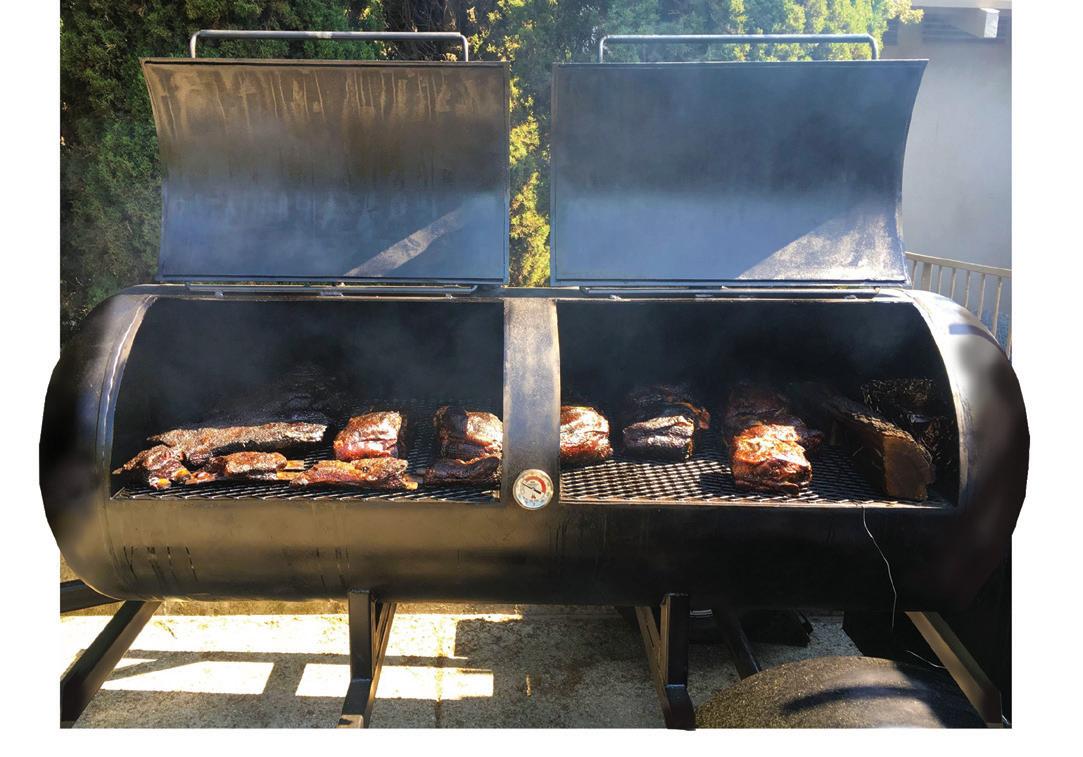
22 RESOURCE SUMMER 2022 PLANNER
JUNE
15 Christmas in July

Pick the hottest weekend of the year for the coolest event ever. After all, in Australia Christmas is celebrated in the summer.
16 Hymn Sing
Everything old is new again. Pass out the old books, call out some numbers, and put the musicians to the test.
17Seed Spitting Contest
Mostly an excuse to bring a bunch of people together with a bunch of watermelons, it’s lots of fun.
3 Religious Liberty Sunday
4 Independence Day – IBSA offices closed
5-9 Students Camp (Grades 6-12)
Lake Sallateeska
9 DiscipleLab Marion
11-15 Kids and Students Camp (Grades 3-12) Streator

18-22 Students Camp (Grades 7-12)
Lake Sallateeska
22-23 Men/Boy’s Camp Streator
28-29 Chicagoland Camp Streator
NOTES:
IBSA.org 23
JULY
AUGUST
1-2 Associational Round Table
IBSA Building, Springfield
5 Student Evangelism Training
IBSA Building, Springfield
9 Regional Worship Training Mt. Vernon
11 Regional Worship Training
Springfield
16 EQUIP Training Event
20 DiscipleLab
IBSA Building, Springfield
23 EQUIP Training Event
28 Global Hunger Sunday
NOTES:
18 Gamers Revival

Just before school starts, ask your teens to plan a multi-night event for their friends that includes games, worship music, and a gospel presentation. Add pizza or hot dogs, of course. This could be new to a generation not raised on youth evangelism services. It’s also good promotion for Youth Encounter in the fall.
19 Jewish Fall Festival

Do some research on Rosh Hashanah or Yom Kippur. Lay out a celebration like Jesus would have observed. Teach on man’s sin and God’s forgiveness.
20
End-of-season Harvest
Ask planting teams to pick their last tomatoes and zucchini and bring them to church. Then distribute the free vegetables in a neighborhood that needs introduction your church’s fall ministry.
24 RESOURCE SUMMER 2022
EQUIPPING
SBC Annual Meeting
6/14-15 Anaheim, CA
The convention will meet in California for the first time in 40 years, with the theme “Jesus: The Center of it All.” With nearly 200 ancillary meetings, events, and gatherings throughout the week, there will be plenty to do and much to discuss.

The event will be held at the Anaheim Convention Center, located just blocks from Disneyland. Registration is required and can be done online prior to the meeting. To have representatives who can vote and participate in the convention events, churches should elect members to serve as messengers. Childcare and hotel registration are also available online.
www.sbcannualmeeting.net
IBSA.org 25
SUMMER 2022
5/14 Love Fellowship, Romeville
7/9 Williamson Baptist Association, Marion
8/20 IBSA Building, Springfield
The lab is designed for the church pastor plus one discipleship-oriented church leader (Sunday school director, minister of education, etc.) who will partner to learn, discuss, and develop a workable, practical plan for disciple-making in their church. The cost to attend is $50 per church.

(217) 391-3142
FranTrascritti@IBSA.org
Online Certificate Program
6/12 Classes begin
IBSA is launching a NEW Equip Online Certificate program! Leaders will be able to take various Equip online courses and receive a certificate in as little as 12 months in the following areas:
• Christian Ministry
• Pastoral Leadership
SBC Pastors’ Conference
6/13-14 Anaheim, CA
After two year’s absence due to the pandemic, the SBC Pastors’ Conference is coming back in a big way. This year’s event will feature more than a dozen pastors from churches ranging in size of 60 to 8,000, delivering messages to Baptists gathered in Anaheim and watching online. They include:
• Julio Arriola, church planting coordinator in Texas
• Mark Clifton, a pastor and NAMB Church Replanting Strategist
• Adam Greenway, president of Southwest Seminary in Dallas
• Omar Johnson, pastor of Temple Hills Baptist Church in Maryland.
Each man will preach behind the “Bellvue Pulpit” on loan from Bellevue Baptist Church in Memphis, Tenn., used through the decades by pastors Adrian Rogers, Steve Gaines, R.G. Lee, and Ramsey Pollard.

• Deacon’s Ministry
• Women’s Ministry
All courses will be taught by experienced leaders who bring a practical, hands-on approach to relevant ministry topics. There is no cost to participate.
www.IBSA.org/Equip
(217) 391-3137 • LindaDarden@IBSA.org
This is an opportunity for every church leader to receive quality leadership training in many areas. Check the list online. A main session and two breakouts are included. There is no cost to attend.
26 RESOURCE SUMMER 2022
LEADERSHIP
www.IBSA.org/Equip (217) 391-3142 • FranTrascritti@IBSA.org www.sbcpc.net Coming this fall to an association near you
Regional Worship Training
8/9 First Baptist Church, Mt. Vernon
8/11 IBSA Building, Springfield
Worship leaders, vocalists, musicians, and worship technology volunteers will be encouraged in how they lead congregations to glorify God and will be equipped through practical breakout sessions.
(217) 391-3142 • FranTrascritti@IBSA.org
IBSA Lending Library
The lending library is a resource available to all IBSA churches at no cost with over 400 titles available on DVD. It offers a broad range of Bible studies and topics for women, men, youth, and kids. Study lengths vary. Some of the most popular titles include:
• Kingdom Man Rising by Tony Evans
• The Prodigal Son by Matt Carter
• Encountering God by Kelly Minter
• Never Alone by Jeannie Cunnion
(217) 391-3128 • CarmenHalsey@IBSA.org
A list of study titles is available at IBSA.org/Lendinglibrary.
7/25-8/1
A youth mission trip to Chicago to get first-hand church planting experience. Includes neighborhood outreach, backyard Bible clubs, learning about different cultures, and working with the planters seeking to reach communities. There will be nightly speakers with praise and worship. Cost is $250 per student (includes week’s lodging and food).

www.IBSA.org/go-chicago • (217) 391-3123
KevinJones@IBSA.org
Disaster Relief Training
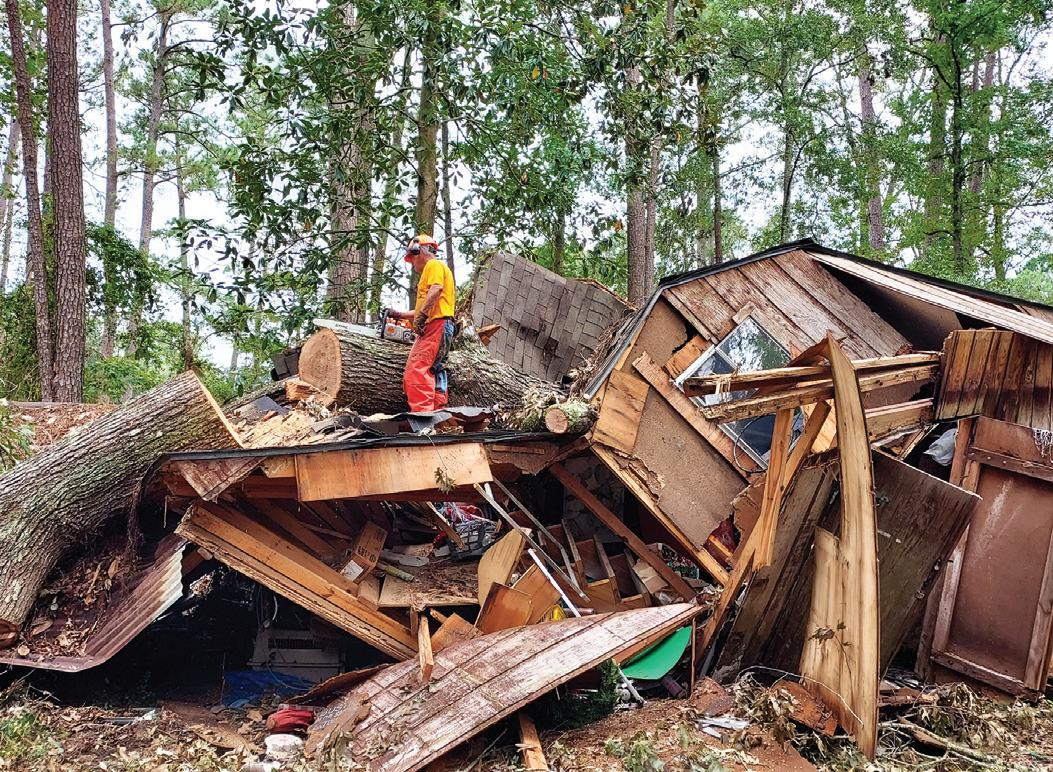

5/21 Streator Baptist Camp

Disaster Relief Training Weekends involve a Friday evening and Saturday daytime schedule. The Chaplaincy class begins earlier on Friday afternoon at 1 p.m. New volunteers should attend the Friday evening Introduction to Disaster Relief 101 Class and then take specialty classes on Saturday. New volunteers are also required to take Introduction to Disaster Relief 101 Friday evening and Saturday afternoon.
www.IBSA.org/DR • (217) 341-2416 • Skcarty72@gmail.com IBSA.org
27 LEADERSHIP & MISSIONS
IBSA Camp Facilities
In addition to multiple weeks of camp sessions for kids and teens each summer, IBSA’s two camp facilities are available for churches and groups to rent for recreation, retreats, training events, and discipleship gatherings of all kinds. Each situated on beautiful wooded acreage, the camps offer extensive meeting and worship space, dining facilities, lodging, and more. Our camps have never been better. Contact camp managers for booking information.
Kids and Student Camps
STREATOR BAPTIST CAMP
Jacob Kimbrough, Manager (815) 992-5947
www.StreatorBaptistCamp.org
There are numerous opportunities for children and students to participate in a week-long camp experience. IBSA partnered with local association leaders to make camps even better this summer. Camp will be held at both Lake Sallateeska and Streator Baptist Camps. Early registration is recommended.
June 13-17 Kids (Grades 3-12) Streator
June 19-23 Kids (Grades 3-6)
Lake Sallateeska
June 20-24 Kids and Students (Grades 3-12) • Streator
June 27-July 1 Kids and Students (Grades 3-6)
Lake Sallateeska
July 5-9 Students (Grades 6-12) • Lake Sallateeska
July 11-15 Kids and Students (Grades 3-12) • Streator
July 18-22 Students (Grades 7-12) • Lake Sallateeska
www.IBSA.org/2022Camps
Contact for kids, student camps, and Super Summer is JackLucas@IBSA.org • (217) 391-3124
LAKE SALLATEESKA BAPTIST CAMP
Brock Vandever, Manager (618) 336-5272
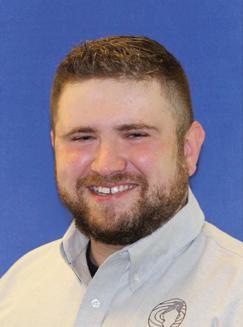

www.LakeSallateeskBaptistCamp.org
6/28-7/2 Hannibal-LaGrange University
“INFLUENCER” is a training and learning experience for students who’ve already committed their lives to Christ but are seeking fresh ways to develop their fullest potential as a Christian. During the week, students will engage in large-group worship, small-group Bible study, relationship building, purposeful recreation, and more. Cost: $235 per student.

www.IBSA.org/Students
Rise-Up Retreat
7/22-23 Streator Baptist Camp
An overnight retreat creating a fun and worshipful experience for boys and the father-figure in their lives. Participants will be equipped to lead spiritually in practical, everyday ways. All boys, grades K-8, must come with a registered adult male. Men may bring more than one boy. Cost: $40
www.IBSA.org/Growth
(217) 391-3137 • LindaDarden@IBSA.org
28 RESOURCE SUMMER 2022
KIDS &
CAMPS
Investment Services for Churches and Individuals






Life Stewardship/Christian Estate Planning Church Building Loans


Academic Scholarships Church Legacy

IBSA.org 29
Clinic
is a new ministry of BCHFS. The center helps pregnant women make important life-saving decisions. PARTNERS & SERVICES Doug
Executive Director (217) 391-3102 www.BCHFS.com E-mail bchfs@bchfs.com 949 County Rd. 1300 N. Carmi, IL 62821 • (618) 382-4164 Baptist Foundation of Illinois Baptist Children’s Home and Family Services BrotherhoodMutual.net/mpp.htm Your IBSA Ministry Partner Churches often face legal issues, so they need to be prepared. When an issue arises, churches need trusted counsel. Enter code IBSA20 to receive a reduced annual membership of $200, which is 20% off the regular price. We can help your church prepare for these changes. ADFChurchAlliance.org/culture OUR CULTURE IS CHANGING Your Preferred Ministry Insurance Provider Join the thousands of churches that trust Brotherhood Mutual by requesting your free quote. Because we’re family, IBSA churches receive benefits from our ministry providers. Local, churchaffiliated agents Ministry specific products 98% customer satisfaction
GraceHaven Pregnancy Resource
in Mt. Vernon
Morrow
391-3116
391-3105
Ken.Steward@BaptistFoundationil.org Sheila.Jessen@baptistfoundationil.org BaptistFoundationil.org
Sheila Jessen Office Coordinator (217)
Ken Steward Associate Director (217)
Doug.Morrow@BaptistFoundationil.org
OPEN HEARTS & DOORS
Grief Share groups connect churches with lost people
Carmen Halsey went to her first GriefShare meeting as a spectator. Almost two years after her husband, Keith, died of a heart attack on a Sunday morning in April, after her mother’s death less than a year later, and in the middle of a pandemic, she was looking for answers. Not so much for herself maybe, but for other women she had recently encountered who had lost a spouse.
“I remembered a woman had mentioned GriefShare to me in the receiving line at my husband’s funeral, so I found it online.” A session had just started at a church in Springfield.
Many churches use specialized small groups to open doors and heal hearts. This nationwide Christian ministry created in 1998 combines video teaching, a workbook with daily assignments, and discussion opportunities over 13 weeks.
Participating churches are listed on their website along with enrollment information and an archive of videos on grief recovery.
Seated socially distanced with everyone wearing masks, Halsey watched the meeting of the grief recovery group unfold. Some people spoke up, others didn’t. Some had lost spouses, others mourned parents, children, or friends. Some were recently bereaved, others’ loss was years old.
It wasn’t until the facilitator
dimmed the lights and started the video that Halsey felt drawn in.
“I watched as Nancy Guthrie and pastors and others started talking about the things I was feeling but never talked about—would I have enough money to live, changed relationships, how long grief continued—but it was all grounded in Scripture,” she said.
“I didn’t speak up, but others did. I saw that when someone’s grieving, there’s a brotherhood there.” Halsey returned each week over the next three months for the group meetings. “I saw that grief is a journey—we’re either going to be intentional or we’re not.”
She chose to be intentional, both personally and professionally.
As a Leadership Development Director for IBSA, Halsey knew the ministry could be a valuable tool for her church and many others.
First, she explored the organization that started GriefShare 35 years ago, the Christian ministry that earlier had founded DivorceCare.
Then she went to her pastor, the man who succeeded her husband as pastor at First Baptist Church of Raymond.
They soon started the church’s first GriefShare course. And Halsey began telling others about the opportunities it offers for personal healing, specialized small-group discipleship, and open doors for evangelism in the community.
Will we ever laugh?
Lila Speidel wasn’t really looking for a counseling group when she heard about GriefShare. During the four years after the death of her husband, Mike, Speidel had scoured the library for books on grief recovery. The best help she found came from a co-worker who occasionally offered to listen. “She made a safe place where it was OK to talk about Mike,” Speidel said. “After 35 years and five days of marriage, it wasn’t like his memory was just wiped off the face of the earth.”
Then her oldest daughter called. “You have to try this,” she said. Her pastor’s wife had led a group at their church in Naples, Florida. “It’s the best thing I’ve done to deal with Daddy’s death.”
So she did. She visited one session at a church in another town and her pastor did some exploration online. “You have to do this, Lila,” he told her, as did several other people. She eventually embraced the calling and started GriefShare at Logan Street Baptist Church in Mt. Vernon, offering the 13-week small group meetings with videos and workbooks.
“You don’t realize how much (grief recovery) is needed until you go through it yourself, to know how a person feels and to understand their pain,” she said. Mike was a bivocational pastor, and Speidel now recalls with some chagrin her earlier attempts to comfort the grieving.
30 RESOURCE SUMMER 2022
“Even pastors tell me, ‘Lila, I just don’t know what to do.’” Making a safe place to process their sometimes-overwhelming feelings is the best first step.
“Eventually they share a laugh, when they weren’t laughing at the beginning,” Speidel said. “I watch as they are healing, and that’s the greatest blessing of all.”
When hearts are open
Kip Troeger was looking for a way to minister to his community during the pandemic. “As a church we had been trying to find a way to heal from the tremendous loss that we have experienced due to Covid,” he said.
The pastor of Riverton First Baptist Church first heard about GriefShare from Halsey, not long after her own loss. “Then we stopped by her ice cream shop and she brought it up again.” Halsey opened the small store in a former barber shop building where her husband had taught Bible studies, in part as a tribute to him.
“She was talking about how powerful it was,” Troeger said, so he decided to look into the ministry. “During Covid, a lot of people have lost loved ones. It just seemed like it would be a good fit.”
And it was.
With his full-time work as an Army chaplain and a master’s degree in counseling, the bivocational pastor knew the need for skilled help during mourning. But he’s quick to point out that facilitating GriefShare doesn’t require a degree. In fact, it may work best for the unskilled.
“When I took their training, I was a little bit surprised that they stressed
for the workers not to take a counselor role,” he said. “I was reminded that there’s power in people’s willingness to sit in each other’s pain. When people are willing to share in someone else’s grief and sorrow, that’s the power of the whole program.”
“Someone who has no background in counseling can feel comfortable facilitating a group,” Troeger said. “Sometimes you can just sit back and watch the conversation unfold among the people in the room. I’ll ask, ‘What really spoke to you in that video?’ and boom! it just takes off.”
For everyone, one GriefShare stipulation is vitally important: Everyone grieves in their own unique way. “There’s no judging other people’s experience,” Troeger said. Whether the loss is for a spouse, a child, or a friend, grief is universal. But for each person, the experience is different.

“A person whose loss was a year ago might wonder why a person who lost someone five years ago is still grieving,” Troeger said. “They might think, ‘Get over it already.’ But there’s no judging. Everyone grieves on their own timetable and in their own way.”
Troeger said when starting the ministry at his church a year ago, he found he had unprocessed grief from his mother’s death 25 years earlier.
“Grief is a crazy thing,” the pastor said. “It’s not a linear thing. The grieving person doesn’t go from A to B and then it’s over. Grief is up and down, it comes back around. It’s a roller coaster.”
Salvation stories
The Riverton church started a GriefShare ministry to help the community with Covid losses. What they found was open doors to even deeper spiritual conditions, specifically lostness.
“One person who lost a spouse was so angry at God. During the course of the 13 weeks, there was amazing healing toward God,” Troeger said.
Another person was invited by others in the group. “You could almost see visibly the Lord working in her life. She heard the gospel message through Griefshare.” The plan of salvation is presented clearly and concisely during the course, and again in the sessions on heaven.
Troeger talked with her about accepting Jesus as Savior, and she indicated she had. I said, “Are you saying straight up that you’ve accepted Jesus as your Savior?”
“I have! He is my Savior,” she said.
“Then you need to be baptized!” a man in the group piped up.
Halsey and Speidel have similar stories, as a recovery group becomes community, and community becomes an open door to the church and for the gospel. Very few participants have balked at the faith aspect, Speidel said. “They either grow in their faith, or they come back to their Christian faith. At least they think about it.
“The more I do it, the more I’m glad to share the gospel through GriefShare.”
IBSA.org 31 R
LEADER LIFE Holding it together
Read Matthew 10:1-4
When we read the list of Jesus’ disciples, some are very well known. As the inside circle, Peter, James, and John are at the top of the list. And we know about Matthew because of his dubious history as a tax collector. Thankfully, he wrote the gospel bearing his name and seemed to redeem his reputation.
Others we know less about. What of Thaddeus? Or James the Lesser? (Imagine how he felt sitting next the disciple who was eventually dubbed St. James Major.)
Is it possible these unquoted disciples were the “glue guys” on the Lord’s team? Jesus picked them for a reason. What was it?
Make a list of the disciples. Discuss what we know about each one.
What is the role of quiet followers who became trusted leaders?
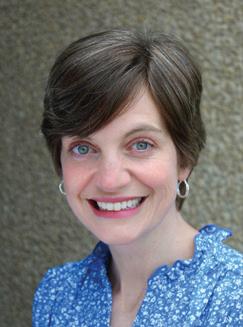
‘Glue guys’ sticky ministry
ur six-year-old recently wrapped up her first-ever basketball season.
With only a handful games under her belt, it’s still unclear what Lucy’s specialty is on the court. Her hands are a little small to dribble easily, and the lowered hoop is too high for her and most of her teammates to reach with much consistency. She’s also too polite to play aggressive defense.
Where she did excel was on the bench—her preferred perch for most of each game. She chatted with teammates and sipped from her water bottle, one leg crossed casually over the other. But she also kept a close eye on the scoreboard and was one of the first to cheer loudly when her team took over on offense.
In basketball parlance, Lucy was a “glue guy” for her team. Players like her are focused on helping their team move forward together. They’re dedicated to the group’s progress. They help hold things together.
Glue guys and girls are a vital part of every church. Their encouraging voices from the sidelines help the larger group stick together. They’re like the ligaments Paul describes in Ephesians 4:16, keeping the body connected as it grows and builds itself up “by the proper working of each individual part.”
Glue guys understand that a teammate’s success is theirs too because they’re working toward the same objective. I recently watched a gifted teacher at my church take a backseat so others can explore their God-given talents. That’s a glue guy. Another leader I know makes it his mission to connect people in discipleship groups, understanding followers of Christ are stronger when they walk together.
When disagreements do arise, glue guys employ graciousness to help the larger group move to the other side. They don’t ignore differences of opinion, and they keep the lines of communica-
tion open. They’re often able to disarm conflict with good listening skills and humility. Here are three ways to identify them:
1. Train your eyes to see glue guys. By nature, they often blend into behind-the-scenes roles. You’ll know a glue guy by his tendency to be the last one in the fellowship hall after the potluck, pushing the mop. Or by how she gravitates toward the person sitting by themselves in Sunday school.
2. Listen for specific encouragement. Have you ever known someone who knew exactly what kind of encouragement you needed at a difficult moment? That was probably a glue guy. They look for ways to build up their teammates that go beyond normal platitudes.
3. Notice natural connectors. Glue guys are more concerned about the team’s progress than their own, so they’re happy to connect people with special skills or interests. They feel the freedom to step back or move onto something else, having done their job to move the team forward.
When you identify a glue guy, thank them. Look for ways to encourage them in their unique, sticky ministry. They may not be marquee players, but they issue a vital reminder of our shared purpose and the call to love one another as Christ has loved us.

32 RESOURCE SUMMER 2022
O
R
MEREDITH FLYNN is a freelance writer, wife, and mother of two. She is active in ministry at Delta Church in Springfield.
For girls grades 6-12 • Nov. 4-5
AWSOM weekend gathers a community of student girls for a time of worship, solid bible teaching, and practical training. These opportunities will equip them to become more grounded in their walk with Jesus.
IBSA.org/AWSOM


Oct. 9 | SAVE THE DATE
A one-day event for teens

Christian musical artists

Top speakers
IBSA.org/youth-encounter
June 28-July 2
Hannibal-LaGrange University
For students who’ve committed their lives to Christ but are seeking fresh ways to develop their potential as a Christian. Cost: $235 per student
Contact: JackLucas@IBSA.org
For more information and to register go to IBSA.org/Students
Youth mission trip for first-hand church planting experience. Includes neighborhood outreach, nightly speakers, and more.

Cost: $250 per student
7/25 - 8/1
More info available at IBSA.org/go-chicago
(includes food and lodging) KevinJones@IBSA.org
 Guest speaker
Courtney Veasey
Guest speaker
Courtney Veasey
SAVE THE DATE
• Illinois Baptist Women


• Ministers’ Wives • New IBSA churches

• Second chair leaders
Our 2022 convention will feature special gatherings and events, including: • Associational leaders • Church planters • Disaster Relief volunteers • Evangelism coaches • Hispanic leaders
Nonprofit Organization U.S. POSTAGE PAID Peoria, Illinois Permit No. 325
Illinois Baptist State Association 3085 Stevenson Drive Springfield, IL 62703 DIRECTORY
People who can help Starts on page 3 PLANNER Ideas for spring Starts on page 19 EQUIPPING Build your team Starts on page 25
Annual
• Small church leaders IBSA
Meeting Nov. 2-3 Metro Community Church | Edwardsville IBSA Pastors Conference is November 1-2.












































































































 Guest speaker
Courtney Veasey
Guest speaker
Courtney Veasey


